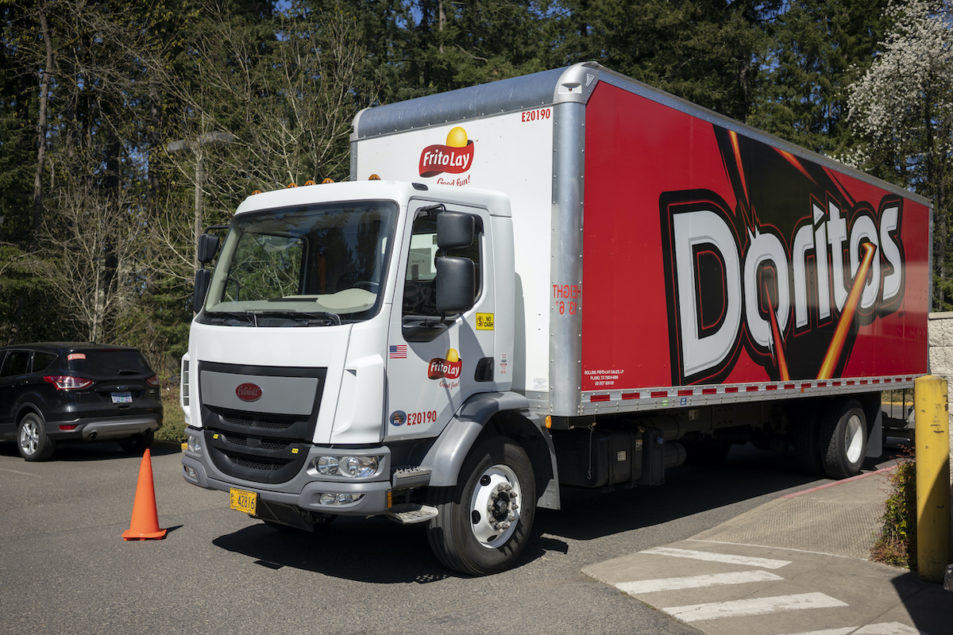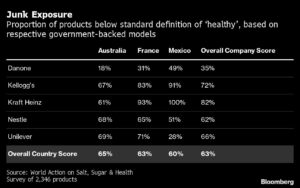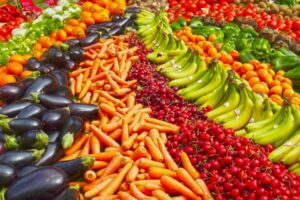
Climate Change is not only doing irreparable damage to the planet; it has begun to hinder global food and beverage supply chains. In fact, climate change could lead to an end to some of our favorite drinks and snacks, such as Doritos.
That message was delivered during a recent presentation entitled “A World Without Doritos? How Climate Change Is Impacting Food and Beverage Supply Chains,” hosted by Claudia Clemens, senior director, analyst, at Gartner. Clemens was speaking at the Gartner Supply Chain Symposium/XPO in Orlando, Florida, May 8-10, 2023.
Clemens listed concerns about each of the four main ingredients that go into making Doritos: corn, sunflower oil, dairy and salt. She then explained how climate change has hurt the global supply of each of them.
Corn
According to the USDA, Politico and Farm Journal, a third of the world’s corn supply is grown in drought zones.
Clemens said more than 75% of the global corn supply is grown in just four places: China, the United States, Brazil and Europe. The amount grown in areas that suffer from drought conditions ranged from 30% (Brazil) to 64% in the U.S. Drought-prone regions often yield less corn than expected, resulting in a drop in the global availability of corn, which causes price increases for the vegetable. From 2021 to 2022, the price of corn increased by 36%, jumping an additional 27% to 2023.
Due to such supply constraints, Gartner predicts global corn production will fall by 5% year-on-year in 2023.
Sunflower Oil
The global sunflower oil supply chain has been negatively impacted by the ongoing war between Russia and Ukraine. Some 75% of all sunflowers were grown in Ukraine and Russia before Russia invaded Ukraine in March 2022. Now, the share of global sunflower production between those two countries has fallen to 58%.
Other regions — such as China, the U.S., Europe and Brazil — have attempted to plant more sunflowers (again in drought zones) to offset this production drop-off, but Clemens said those efforts were unsuccessful, causing the price of sunflower oil to increase by 37% from 2022 to 2023.
Gartner expects global sunflower oil production to decline by 12% year-on-year in 2023.
“I’m sure many of you have had to turn to other sources of oils,” Clemens said during her presentation. “What this has done is create a ripple effect of risk in other oils.” She explained that demands for canola and soy oil have recently skyrocketed, driving up prices. Demands for palm oil have also increased because of constraints on the global sunflower oil supply chain, leading to more deforestation and potential human rights risks in palm-oil-producing countries.
“While we might think of it as an isolated issue, it has had a much broader impact across the entire oil industry, regardless of the type of vegetable,” Clemens said.
Dairy
Clemens said the perishability of milk makes it a uniquely localized commodity, presenting its own challenges. According to data from Ceres, the USDA and FAO, less than 10% of the world’s milk comes from global trade. This puts milk “at the mercy” of local climates because there are limited sourcing options.
Clemens also explained that dairy supply chains have been hurt by droughts. In the U.S. alone, almost half of all dairy cows are being raised in drought zones, which makes it more difficult to keep them healthy enough to continue producing milk. This leads to a decrease in milk production as well as an increase in labor costs.
Currently, the cost of dairy is the highest it has been in 40 years. Unfortunately, the price of milk will likely continue to rise, as dairy demands are expected to grow by 60% over the next ten years, according to Gartner.
Salt
While salt is not directly impacted by drought, Clemens described this commodity as a “companion ingredient” because it is used in the production of dairy products as well as baked goods. Increased demand worldwide for processed foods, which use salt as a preservative, has caused a ripple effect that has increased the overall demand for salt.
But there have been issues with the world’s salt supply, caused by disruptions brought on by mergers and acquisitions, labor shortages, and COVID-19 shutdowns within China — this last factor being particularly significant because 22% of the global salt supply comes from China, according to Statista.
How Can Companies Minimize the Impact of Climate Change?
Clemens laid out a four-step process to mitigate the impact of climate change, ensuring we don’t have to live in a world without Doritos. The process is dubbed CHIP (Climate Advocacy, Handle Disruption, Involve Others, Preventive Planning).
Advocacy is key. Supply chain professionals should educate themselves on how climate change impacts their industries. They can then invest in new technologies to improve supply chain forecasting and planning. They can also provide more support for sustainable metrics by implementing preventive measures and diversifying their growing practices.
Additionally, if supply chains can continue to handle potential disruptions, the impact of climate change can be reduced. According to Gartner, climate change will drive a three-fold increase in supply chain disruptions by 2026.
Involving other supply chain stakeholders is another good way to lessen the impact of climate change, and Gartner recommends that companies collaborate with their suppliers and customers in order to launch new problem-solving initiatives.
Lastly, suppliers must take a proactive approach with preventative planning. They can do this by creating risk models, collaborating on joint innovations, and emphasizing certain metrics like recovery time and the probability of achieving assigned goals in a timely fashion.
“Through climate advocacy, handling disruptions, involving others, and having a preventative plan, we can tackle this climate change, and we won’t have to envision a world without Doritos,” Clemens concluded.
- SEO Powered Content & PR Distribution. Get Amplified Today.
- PlatoAiStream. Web3 Data Intelligence. Knowledge Amplified. Access Here.
- Minting the Future w Adryenn Ashley. Access Here.
- Buy and Sell Shares in PRE-IPO Companies with PREIPO®. Access Here.
- Source: https://www.supplychainbrain.com/articles/37372-climate-change-threatens-a-world-without-doritos
- :has
- :is
- :not
- $UP
- 2021
- 2022
- 2023
- 2026
- 40
- a
- About
- According
- achieving
- acquisitions
- across
- Additional
- advocacy
- again
- All
- alone
- also
- amount
- an
- analyst
- and
- Another
- approach
- ARE
- areas
- AS
- assigned
- At
- attempted
- availability
- BE
- because
- been
- before
- begun
- being
- between
- BEVERAGE
- Brazil
- broader
- brought
- but
- by
- CAN
- caused
- causes
- causing
- certain
- chain
- chains
- challenges
- change
- China
- chip
- Climate
- Climate change
- collaborate
- collaborating
- comes
- commodity
- Companies
- Concerns
- concluded
- conditions
- constraints
- continue
- Cost
- Costs
- could
- countries
- COVID-19
- create
- Creating
- Customers
- dairy
- data
- Decline
- decrease
- deforestation
- delivered
- Demand
- demands
- described
- difficult
- directly
- Director
- Disruption
- disruptions
- do
- doing
- done
- Dont
- drinks
- drive
- driving
- Drop
- Drought
- dubbed
- during
- each
- educate
- effect
- efforts
- emphasizing
- end
- enough
- ensuring
- Entire
- entitled
- envision
- Europe
- expected
- expects
- explained
- fact
- factor
- Fall
- Fallen
- Fashion
- Favorite
- florida
- food
- foods
- For
- four
- from
- from 2021
- Gartner
- Global
- global trade
- Go
- Goals
- good
- goods
- Grow
- Growing
- grown
- had
- Half
- handle
- Handling
- Have
- having
- healthy
- her
- highest
- hinder
- hosted
- How
- HTTPS
- human
- human rights
- Hurt
- if
- Impact
- impacted
- impacting
- Impacts
- implementing
- improve
- in
- In other
- Increase
- increased
- Increases
- industries
- industry
- initiatives
- innovations
- into
- Invest
- involve
- involving
- isolated
- issue
- issues
- IT
- ITS
- joint
- jpg
- just
- Keep
- Key
- labor
- Last
- launch
- lead
- leading
- Leads
- less
- like
- likely
- Limited
- Listed
- live
- local
- Main
- MAKES
- Making
- many
- March
- May..
- measures
- Mergers and Acquisitions
- message
- Metrics
- might
- Milk
- Mitigate
- models
- more
- much
- must
- negatively
- New
- New technologies
- next
- now
- of
- offset
- often
- Oil
- oils
- on
- ongoing
- only
- Options
- order
- Orlando
- Other
- Others
- our
- out
- over
- overall
- own
- palm
- particularly
- Places
- plan
- planet
- planning
- plato
- Plato Data Intelligence
- PlatoData
- potential
- practices
- Predicts
- presentation
- price
- Prices
- Proactive
- probability
- problem-solving
- process
- processed
- Production
- Products
- professionals
- provide
- Puts
- raised
- recent
- recently
- recommends
- recovery
- Reduced
- Regardless
- regions
- resulting
- rights
- Ripple
- Rise
- Risk
- risk models
- risks
- Russia
- s
- Said
- salt
- senior
- Share
- she
- shortages
- should
- shutdowns
- significant
- snacks
- some
- Sources
- Sourcing
- speaking
- stakeholders
- States
- such
- suppliers
- supply
- supply chain
- Supply chains
- support
- sustainable
- tackle
- Take
- Technologies
- ten
- than
- that
- The
- their
- Them
- themselves
- then
- There.
- they
- think
- Third
- this
- those
- threatens
- time
- to
- trade
- TURN
- two
- type
- u.s.
- Ukraine
- unfortunately
- uniquely
- United
- United States
- usda
- use
- used
- war
- was
- Way..
- we
- WELL
- were
- which
- will
- with
- within
- without
- world
- world’s
- worldwide
- years
- Yield
- you
- zephyrnet
- zones












